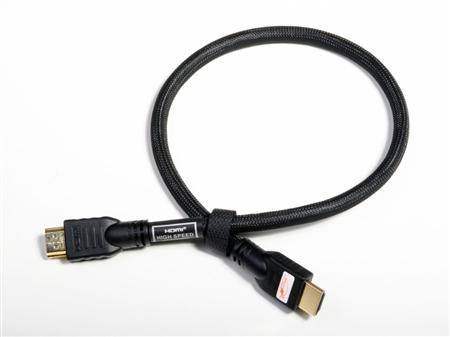And you thought it was just better quality. The HDMI cable is now a part of almost every home. It’s an easy, friendly, and inexpensive way to connect your home theatre devices. It’s a single cable that replaces up to five of the old-style cables. But is that really the whole story?
There’s a myth that says you need an HDMI cable for a digital connection. That just isn’t true. Think about it… the signal coming from your satellite dish is digital. There’s a myth that HDMI cables are required for the “massive bandwidth requirements” of true HDTV. Does that really make sense? Your satellite cable carries hundreds of HD channels. So what’s the real story?
Here’s what they don’t want you to know
Before we tell you the story, here’s the fact “they” don’t want you to know: you can get HD video and audio over a regular coaxial cable. It’s called HD-SDI and it carries uncompressed, perfect, pristine digital and audio over a plain old RG-6 cable. Broadcasters use it, why can’t you?
The problem is that if you could actually use HD-SDI, there would be nothing to stop you from making unlimited, perfect digital copies of anything you want. That would be a nightmare for the movie studios and broadcasters who produce everything you watch. It would be the end of their profit streams (and it would mean they would actually have to create new content instead of relying on royalties.
It’s really about content protection
When HDTV was in its infancy, the content providers got together with engineers to develop a new form of copy protection that would be very hard to break, called HDCP, or High-Definition Content Protection. HDCP is different from other copy protection schemes because it relies on a constant stream of information flowing back and forth from playback devices (like DVRs) and display devices (like TVs.)
Every few seconds, the two devices pass information back and forth to make sure they are still connected. If the information isn’t received, the flow of video and audio stops. This has to happen constantly or there is no picture and no sound. The information is generated between the two devices automatically and since no person is involved, it would be almost impossible to steal that “authentication key” and connect a digital recorder to the playback device.
What about component outputs?
Since many devices also have component outputs, Blu-ray players and streaming box makers automatically limit the output over component to standard definition. (Component outputs don’t have copy protection.)
Satellite TV companies don’t limit their component outputs to standard definition, so it is still technically possible to make HD copies from a DIRECTV box. It’s illegal, but you can technically do it.
With HDCP in place, the engineers cooperated in creating a connector that would carry digital video, audio and HDCP and be easy to connect. The HDMI connector pushes in easily but does not pull out easily. It’s impossible to put in upside down and it’s fairly rugged.
HDMI was a hit, but it’s not really because it’s one wire… it’s because the companies that collaborated to make it hid their true intentions from you.
Do you need more HDMI cables?
So, it’s true that HDMI cables have that secret feature that makes them so helpful to content providers. It’s still true that they’re the way we connect things. So, stock up! It’s always good to have some on hand. Shop at Solid Signal for HDMI cables and everything you need to live your best digital life!





